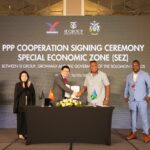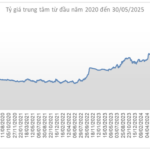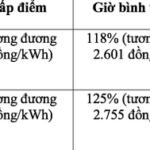At the recent Trade Promotion Conference with Foreign Trade Offices in May 2025, organized by the Ministry of Industry and Trade, Mr. Do Ngoc Hung, Commercial Counselor of the Vietnam Trade Office in the US, asserted that the US remains a potential market for Vietnam’s textile and footwear industries.
VIETNAM’S MARKET SHARE SURPASSES CHINA’S
According to data from the US Department of Commerce, in 2024, the import turnover of the US textile and apparel sector reached 112.9 billion USD. Vietnam’s textile and apparel exports to the US market stood at 15.94 billion USD, accounting for 14.1% of US import turnover, ranking second after China.
For footwear, the US imported 33.35 billion USD worth of products, of which Vietnam’s footwear exports to the US reached 9.38 billion USD, accounting for 28.1% of US footwear imports, making Vietnam the second-largest supplier to the US market in this sector, again after China.
According to reports from associations of textile, fashion, and footwear industries, the US textile market is forecasted to grow by 4.1% from 2025 to 2033. Presently, about 95% of garments sold in the US are imported.
As for the footwear industry, the market size is expected to expand by 3.8% during 2025-2034. On average, American men own 12 pairs of shoes, while women own 27 pairs. Approximately 99% of the footwear sold in the US is imported.
The top 10 exporters of textiles and apparel to the US in the first quarter of 2025 were China, Vietnam, India, Bangladesh, Mexico, Indonesia, Cambodia, Pakistan, Italy, and Turkey.
Similarly, the top 10 exporters of footwear to the US during the same period were China, Vietnam, Indonesia, Italy, Cambodia, Mexico, Bangladesh, Germany, India, and Spain.

China remains the largest footwear supplier to the US market, but its market share dropped to 35.6% in 2024, the lowest in 32 years. In contrast, Vietnam achieved a record-high market share of 32.5%, the highest ever recorded. Notably, in March 2025, China’s market share fell to 26.7%, the lowest in 33 years, while Vietnam’s market share reached a new peak of 39.1%.
Regarding the textile and footwear industries, Mr. Hung remarked that while there is a push for the “Buy American” movement, finding clothing and footwear made in the USA can be challenging. Manufacturing these products requires substantial capital, heavy machinery, and labor-intensive processes. The US ambition to build and revive domestic production capacity through tariff policies will be a challenging endeavor.
Recently, President Trump agreed with a comment made by US Treasury Secretary Scott Bessent that the US does not necessarily need “a booming textile industry.” The President explained that textile products like shirts and socks can be made very well elsewhere. Instead, the US aims to “produce chips, computers, and many other products like tanks and ships.”
“Thus, the US remains a promising and opportunistic market for Vietnam’s textile and footwear exports,” emphasized Mr. Hung.
MAINTAINING A CONTINUOUS PRESENCE
To seize the opportunities presented by the US market and boost exports, Mr. Hung recommended that the Ministry of Industry and Trade and other relevant ministries and sectors continue to promote negotiations to establish stable mechanisms for businesses, particularly those in the textile and footwear industries, to proactively engage in production and export activities.
He also suggested implementing support mechanisms and providing guidance to help businesses comply with regulations related to standards, origin, sustainable production, and social responsibility in the importing market.
Local authorities should offer support and create favorable conditions for businesses to enhance their competitiveness and invest in sustainable and responsible production.
Additionally, industry associations should actively coordinate with US associations and partners to obtain up-to-date information on import regulations and guide businesses accordingly. They should also collaborate with US partners to advocate for policies that facilitate the participation of Vietnamese textile and footwear industries in the US market.
Furthermore, it is crucial to strengthen trade promotion activities and organize promotional events that align with the market context and the objectives of different business groups. This ensures the continuous presence of Vietnamese textile and footwear industries in the US market through international and specialized trade fairs.
Mr. Hung advised businesses to enhance their competitiveness and improve production efficiency to meet the criteria and technical standards required by the market. They should also pay attention to supply chain transparency and particularly focus on complying with the UFLPA (Uyghur Forced Labor Prevention Act).
Moreover, businesses should proactively communicate with import partners to stay updated on market policies, regulations, and reactions. They should also engage in discussions with partners to address challenges related to tariff policies in the current period.
Lastly, businesses should continue to carry out suitable trade promotion activities to maintain partnerships and market share, contributing to enhancing Vietnam’s export reputation and capacity.
The Master of Vietnam’s Sole Indigenous Shrimp Feed Brand Seeks Investment Opportunities in the Solomon Islands
“Over the past three decades, Vietnamese farmers have gradually mastered the art of shrimp farming. However, when it comes to shrimp feed, no Vietnamese company has yet made a significant impact,” said Mai Van Hoang, an industry expert.
“Billion-Dollar Bet: Transforming Vân Đồn with a $2 Billion Casino Resort”
The Ministry of Finance has just submitted to the Prime Minister a decision on the investment policy for the Van Don casino project in Quang Ninh province. The project is expected to have a total investment of over $2 billion.
VinFast Supplier Conference: Aiming for 80% Localization, Targeting 1 Million Vehicles per Year
VinFast is proud to be partnering with almost 700 domestic businesses to source components, materials, and equipment for its manufacturing operations. This extensive network of local suppliers is a testament to VinFast’s commitment to supporting the Vietnamese economy and fostering a robust automotive industry in the country. By working closely with these businesses, VinFast is not just assembling cars but also building a strong foundation for the future of Vietnam’s automotive sector.





















